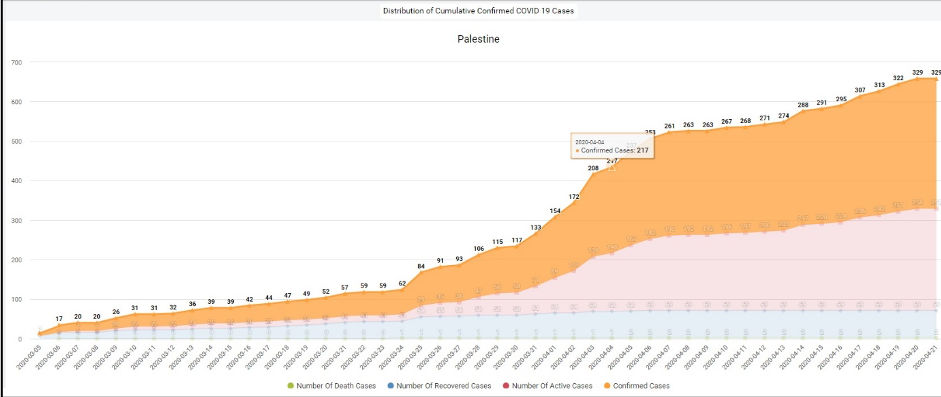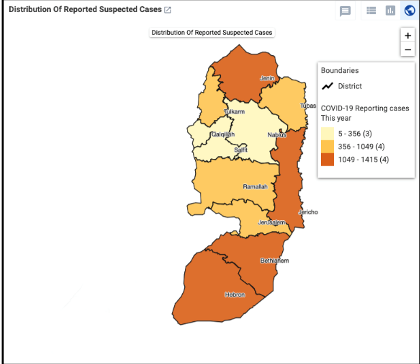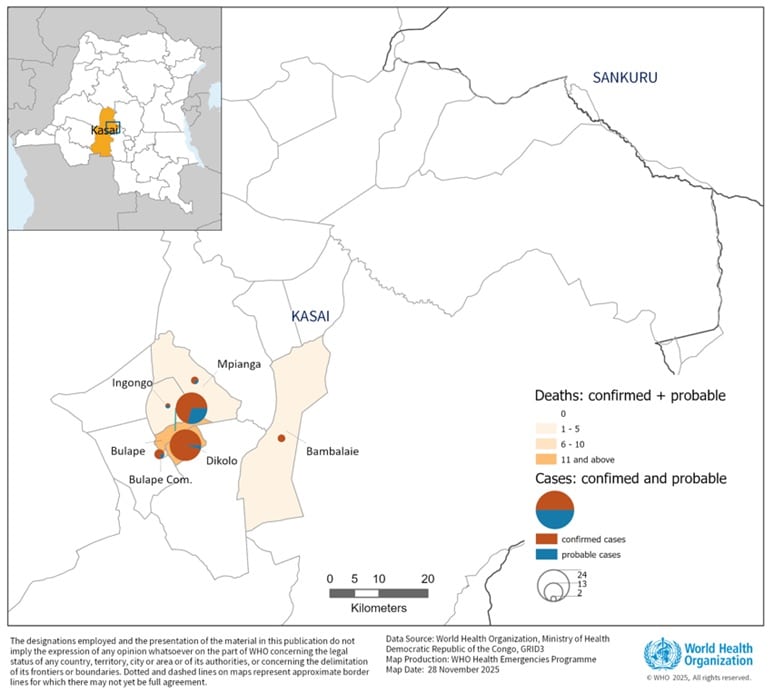Tracking COVID-19 with DHIS2 Electronic Health Registries in Palestine
The Palestinian Country Team used local capacity to quickly develop their COVID-19 surveillance system in response to the coronavirus pandemic

Quick crisis response thanks to an experienced Country Team and shared experience from the global DHIS2 community
The Palestinian National Institute of Public Health (PNIPH) is a project led by the World Health Organization (WHO) in close cooperation with the Palestinian Ministry of Health (MoH) and the Norwegian Institute of Public Health (NIPH). The main aim of PNIPH is to provide evidence-based public health knowledge to support policy formulation, and to bolster national efforts to protect and improve the health of the Palestinian people.

One of PNIPH’s core objectives is to support evidence-based decision making related to public health by improving electronic health registries as effective tools. Using the DHIS2 platform, the MoH and PNIPH have gained extensive experience in building and implementing e-Registries in a number of areas, such as mother and child health, mammography, and communicable case-based surveillance, among others, in an effort to move towards better health information systems.
Since 2017, PNIPH has invested heavily in the establishment of a Palestinian Country Team, which includes members from both PNIPH and the MoH, to build local capacity in DHIS2. The team is now able to configure, customize, and build health systems based on DHIS2 technology in response to local health needs, with minimal external support. This capacity was demonstrated with the outbreak of the COVID-19 virus in Palestine. Recognizing the urgency of the situation, the team quickly took action, and within a week, successfully developed the COVID-19 surveillance package inspired by the existing work of the global DHIS2 community. The Palestinian team built the system to incorporate both MoH needs and WHO standards for tracking information at the case level, and created dashboards with country-specific indicators.
Combining local requirements and global standards
The surveillance system is being used by MoH health workers to input important data related to reported cases of COVID-19 throughout the country in order to track cases. The system adopted WHO-recommended COVID-19 case definitions, as well as MoH and WHO case reporting information, including:
- Socio-demographic information
- Occupation and animal contacts
- Source and method of infection
- Clinical course and pictures, including signs and symptoms
- Co-morbidity and underlying health conditions
- Exposure and travel information prior to the onset of symptoms
- Lab test results
- Health outcomes
The system was built to address four case management criteria:
- Reporting for suspected COVID-19 cases
- Cases of home and institutional quarantine (monitoring of health status for 14 days)
- Hospital isolation cases
- Confirmed case reports
PNIPH has trained focal points in each district to use the system. These focal points are responsible for collecting data, following up on and documenting cases, and monitoring cases in quarantine and isolation. The Minister of Health and the Prime Minister also have access to the system.
Using analytics tools for outbreak monitoring, follow-up, and further research

The software is able to provide real-time analyses and generate needed statistics and indicators required for follow-up and monitoring the containment or spread of the outbreak. Statistics generated by the system will illustrate the characteristics and classification of cases, whether confirmed or suspected, as well as health outcomes (recovered, stable, or deceased), in addition to other WHO and health system indicators. Over 70 indicators are generated by the system and are presented in the dashboard as tables, graphs, and GIS maps. This information will support decision-making regarding preventive and corrective procedures.
Globally, countries are conducting in-depth research on infected, recovered, and death cases related to COVID-19 to better understand the virus and help develop effective treatments. While other sources in Palestine are collecting aggregated and statistical data, the COVID-19 surveillance system developed by the MoH and PNIPH is the only system collecting detailed data at the case level. Leveraging this information, Palestine now has a valuable opportunity to study the pattern of disease as it unfolded in the country.

Palestine COVID-19 surveillance system
The Minister of Health, Dr. Mai Al-Kaila, commended the country team’s swift response to the pandemic and the effectiveness of having both a country team and local expertise in building health systems. These efforts have demonstrated PNIPH’s leadership in pioneering digital health information in the country and the greater region, as well as the Institute’s ability to quickly respond to urgent and emergency health sector needs.
As the COVID-19 situation in the country is still ongoing and largely uncertain, the MoH and PNIPH will continue to adjust the system to benefit the health sector and support the government in its efforts to address the crisis. Additionally, the Palestinian Country Team plans to share its experience with the regional and global community by providing guidance on the customized system, meta-data, and indicators, as well as through online training videos.
For more information about PNIPH please visit: http://www.pniph.org
For more information about the Palestinian Ministry of Health, please visit http://www.moh.ps


